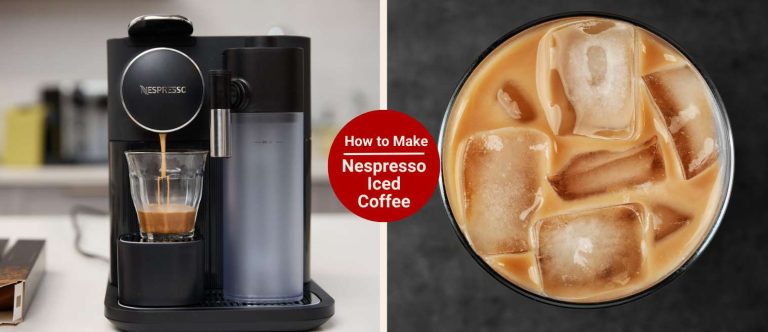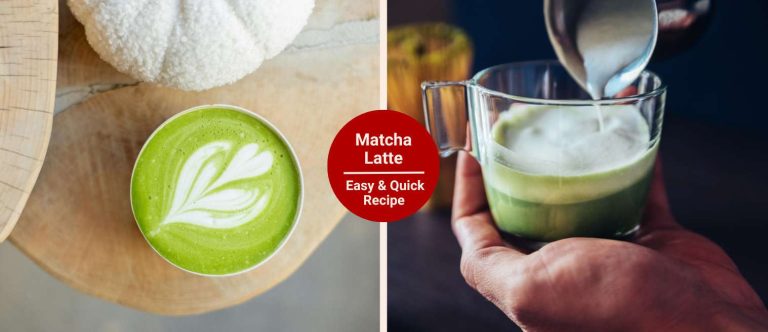How To Make a Ristretto (Mastering the Perfect Coffee Shot)
Last updated on June 20th, 2025 at 04:28 pm
Ever found yourself curious about the tiny cup of coffee someone’s sipping in a foreign film?
That happened to me while watching a movie in Italy. There was a scene where a character took a break at a bustling café, sipping from a small, intensely aromatic coffee shot.
I was intrigued and needed to know more about this mysterious drink. It turned out to be a ristretto, a concentrated espresso that captures the essence of coffee in a single, powerful shot.
That moment sparked a fascination in me! I wanted to make this rich, flavorful coffee and bring a piece of Italian café culture into my home.
So, stick around and learn how to master the perfect ristretto step by step. Let’s start brewing!
Are you a true coffee enthusiast? Discover and challenge your taste buds with “31 Coffee Types You Must Know” – begin your exploration today!
What Is a Ristretto?
A ristretto is a concentrated coffee shot made with the same coffee grounds as an espresso but with half the water. So you get a shorter, more intense shot with a rich, full-bodied flavor that’s less bitter than a regular espresso.
To make a ristretto, use a finer grind of coffee and a shorter extraction time, around 15-20 seconds.

This quick extraction captures the most flavorful compounds while leaving behind some of the harsher elements. The result is a powerful yet smooth shot highlighting the coffee bean’s best attributes.
If you love strong coffee but find espresso too bitter, a ristretto is a perfect alternative.
Ristretto vs Espresso vs. Lungo: Comparison
This table should help you understand the key differences between these three coffee shots. So you can more easily choose the one that you prefer.
| Feature | Ristretto | Espresso | Lungo |
|---|---|---|---|
| Water Volume | 15-20 ml (0.5-0.7 oz) | 25-30 ml (0.8-1 oz) | 50-60 ml (1.7-2 oz) |
| Extraction Time | 15-20 seconds | 25-30 seconds | 45-60 seconds |
| Grind Size | Finer than espresso | Standard espresso grind | Coarser than espresso |
| Flavor Profile | Very concentrated, intense | Balanced, rich, bold | Milder, more diluted, slightly bitter |
| Caffeine Content | Lower than espresso | Standard caffeine content | Higher than espresso |
| Strength | Strong and smooth | Strong and full-bodied | Milder and less intense |
| Bitterness | Less bitter | Balanced bitterness | More bitter because of the longer extraction |
| Best For | Pure coffee flavor lovers | Traditional coffee drinkers | Those preferring a longer drink |

Mastering the Ristretto: Step-By-Step Guide
Equipment
- Espresso Machine:
- Coffee Grinder:
- Coffee Grinder:
- Scale:
- Shot glass or demitasse cup
Ingredients
- Fresh coffee beans (I love using Lavazza Super Crema and Illy Classico for their rich, balanced flavors)
- Filtered water
Instructions
- Grind the Beans: Grind your coffee beans to a fine consistency. The grind should be finer than what you would use for a regular espresso.
- Measure and Dose: Use a scale to measure 18-20 grams of ground coffee. This ensures consistency and helps achieve the perfect extraction.
- Tamp the Coffee: Place the ground coffee into the portafilter and press it down evenly with a tamper. A consistent, even tamp is crucial for a balanced extraction.
- Preheat the Machine: Ensure your espresso machine is fully heated. This helps in extracting the coffee at the optimal temperature.
- Extract the Ristretto: Insert the portafilter into the machine and start the extraction. You want a shorter extraction time, around 15-20 seconds, to yield about 15-20 milliliters of coffee. The shorter time and smaller volume capture the most flavorful compounds, producing a rich, concentrated shot.
- Serve and Enjoy: Pour the ristretto into a shot glass or demitasse cup. Enjoy it to fully appreciate the intense flavors, or use it as a base for other coffee drinks.
Video
Notes
Extra Tips
- Fresh Beans: Always use freshly roasted beans for the best flavor.
- Consistent Grind: Ensure your grind size is consistent to avoid over or under-extraction.
- Experiment: Don’t be afraid to slightly tweak the grind size and extraction time to find what works best for your taste and machine.
History Of The Ristretto
With its roots in Italian coffee culture, Ristretto coffee gained importance in the U.S. because of David Schomer of Espresso Vivace in Seattle during the early 1990s.
Schomer realized the ristretto’s potential to highlight the rich, subtle flavors of coffee beans, making the double ristretto a specialty standard in American coffee culture.

He described espresso’s beauty as its ability to preserve the fragrance of the roast and caramelized sugars, creating a thick, silky mouthfeel.
His precise recipe for a double ristretto involves 20 grams of coffee pulled in 27 to 35 seconds, yielding 20 to 25 milliliters. This meticulous method ensures a concentrated yet smooth coffee experience, capturing the essence of the roast.
David Schomer’s work made the ristretto popular in American coffee shops.
Popular Ristretto Variations
I’m going to share some popular variations that you can try at home:
Classic Ristretto
The Classic Ristretto is where it all began for me. This original, concentrated coffee shot uses less water than a standard espresso.

With a finer grind and shorter extraction time, it produces a rich, full-bodied flavor that truly captures the essence of the coffee beans.
Double Ristretto
When I need an extra kick, the Double Ristretto is my go-to. This variation doubles the intensity by using two shots of ristretto instead of one. It’s perfect for those days when you want an even more robust flavor.

Also, pulling two back-to-back ristretto shots results in a thicker and more concentrated coffee.
Single Origin Ristretto
By using beans from a specific region, this variation highlights the unique flavors of that origin, whether it’s fruity, floral, or chocolaty notes.

It’s a fantastic way to appreciate coffee’s diverse profiles, and I love discovering each region’s distinctive characteristics.
Blended Ristretto
This variation combines beans from multiple origins to craft a balanced and complex flavor profile.

I love combining different coffee beans to create a complex and delicious ristretto. If you enjoy trying out blends, this option is awesome!
Iced Ristretto
Nothing beats the Iced Ristretto for a hot day. You serve the intense coffee shot over ice and cool it down quickly.

This preserves its concentrated flavors while adding a crisp, invigorating element.
Tips On Tweaking The Ristretto
I’m going to share three unique tips to help you improve your ristretto:

1 – Experiment with Grind Size
Adjusting the grind size can greatly change the flavor. I suggest starting with a finer grind than for regular espresso.
If the shot is too quick, use a finer grind; if it’s too slow, go coarser. You want to find the right grind that will perfectly balance the flavors.
2 – Adjust the Extraction Time
A typical ristretto extraction takes 15-20 seconds, but slight adjustments can improve the flavor. For example, if you enjoy a sweeter shot, reduce the time by a few seconds. For a more intense flavor, extend it slightly.
3 – Play with Water Temperature
Water temperature is crucial for extracting the perfect ristretto. For instance, lowering the temperature can result in a smoother shot while increasing it brings out more pronounced flavors.
Most espresso machines allow temperature adjustments, so use this feature to better your ristretto.
Common Pitfalls and How to Sidestep Them
I’ve had my fair share of mistakes along the way. Here are three common problems I faced and how I learned to overcome them:
1 – Inconsistent Shot Times
Initially, I struggled with getting consistent shot times. Sometimes, the ristretto would pull too quickly; other times, it would pull too slowly. I realized that my grind size wasn’t consistent, causing these variations.
I invested in a high-quality grinder, the Breville Smart Grinder Pro. This machine has improved grind size consistency, helped me maintain more stable shot times, and gave me better-tasting ristrettos.
2 – Bitter or Sour Taste
I sometimes had an unpleasant bitter or sour taste in my ristretto. After some trial and error, I discovered that water temperature and extraction time were the problem.
If the water is too hot, the coffee tastes bitter. If the water is too cold, the coffee tastes sour.
I changed the water temperature to around 195-205°F and shortened the brewing time. This gave me a tastier cup.
3 – Uneven Extraction
Uneven extraction left me with weak or overly strong ristrettos. I learned that tamping pressure plays a critical role in this.
Initially, I wasn’t tamping evenly, causing water to flow through some parts of the coffee puck faster than others.
So, I started paying more attention to applying consistent, even pressure when tamping. This greatly improved the uniformity of my extractions and the overall quality of my ristrettos.
Last Thoughts
Okay, we got to the end, but let’s quickly recap. You should start with high-quality beans, adjust your grind size, and fine-tune your extraction time and water temperature.
Whether you prefer a classic ristretto, a double shot, or a unique variation like an iced ristretto, the key is to practice and refine your technique.
I hope these tips help you on your journey to creating an awesome ristretto.
If you have tips or have faced any challenges, please comment below. Let’s share our experiences and learn from each other to perfect this delicious coffee shot!
Questions? We Have Answers.
Get answers to a list of the most Frequently Asked Questions.







